Products
-

high precision right angle prisms made of H-K9 and fused silica
An optical prism is a solid, transparent optic with flat surfaces which refract light. Light enters through one surface, and may be rotated, deviated, or dispersed before leaving through another surface. These surfaces are highly polished, and the angles between them, the number of surfaces, and the position of them determine the function of the prism. -
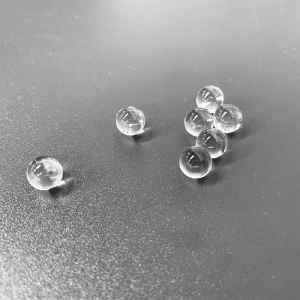
Optical Bk7 Glass Diameter 1-2.5mm Polished Quartz Ball Lens
Ball lenses are, as the name suggests, completely spherical lenses most commonly used to couple light in and out of fibers. We can supply ball lens in a range of alternative materials and diameters. We are able to supply high precision grade 3 ball lenses, mid-range grade 25 ball lenses and commercial grade 100 ball lenses offering all grades to suit any application. Aside from fiber coupling applications, ball lenses are also used as objective lenses in endoscopy, laser measurement systems and bar-code scanning. Our half ball lenses offer uniform dispersion of light and typically used in LED displays and LED traffic lights. Ball lenses are used particularly as beam collimators for optical fibers (fiber collimators) and for fiber-to-fiber coupling. They are also suitable for miniature optics with applications like barcode scanning, as objective lenses in endoscopy and for optical sensors. There are also microscope objectives (particularly immersion objectives) which have a hyper hemisphere (e.g., somewhat more than a hemisphere) as the first lens. DG can provide ball lenses and half ball lenses made from various substrate materials including sapphire, ruby, BK7, UV fused silica, high index glass, and germanium, ZnSe, ZnS with AR coating. Our ball lenses and half ball lenses are ideal for applications such as fiber communications, endoscopy and microscopy. Available diameters are between 0.3 mm to 100 mm, with diameter tolerance (sphericity) <0.4 µm and surface roughness (Ra) <0.007 µm. Custom ball and half ball module options are also available on request. Material options include: quartz (260–2500 nm), sapphire (0.17–5.5 μm), ruby (250 nm to NIR), BK7 (or equivalent) (250–2500 nm), UV-grade fused silica (170–2500 nm), as well as B270 (320–2600 nm) and borosilicate (or equivalent) (310–2700 nm) material options.
You can contact us for further information if you are interested in our ball lenses. -
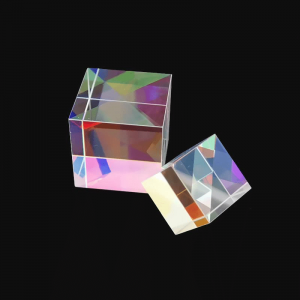
Optical Glass Bk7 K9 Beamsplitter Cube For Laser And Optical Instruments
Beamsplitters are optical components used to split incident light at a designated ratio into two separate beams. Additionally, beamsplitters can be used in reverse to combine two different beams into a single one. Beamsplitters are often classified according to their construction: A beamsplitter is an optical component used to split a beam of incident light into two parts in a laser or illumination system. Cube beamsplitters consist of a pair of precision right-angle prisms carefully cemented or optically contacted together. The hypotenuse of one of the prisms is coated with polarizing or non-polarizing beamsplitter coating and four sides of the cube are AR coated to minimize surface reflection losses. Plate beamsplitters feature a coated front surface that determines the beamsplitting ratio, while the wedged back surface is AR coated to minimize ghosting. Dichroic beamsplitters are wavelength dependent and are used to combine or split laser beams in a variety of colors. Laser beam attenuators provide high resolution intensity control without introducing a gradient in the intensity distribution or a change in the beam propagation direction. -
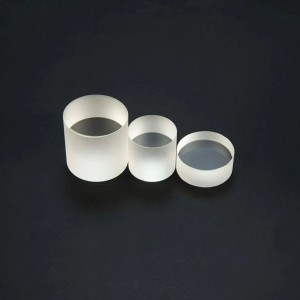
Optical Glass Bk7 K9 Cylindrical Rods Lens for Optical Equipment
A rod lens is a cylindrical lens which has the geometrical form of a cylinder and has a polished mantle, while the two flat end surfaces may be ground. It is analogous to a ball lens for focusing in both directions. Rod lenses can be used, for example, for collimating a divergent beam in one dimension (see Figure 1) or for focusing light to a line. There are also imaging applications. -
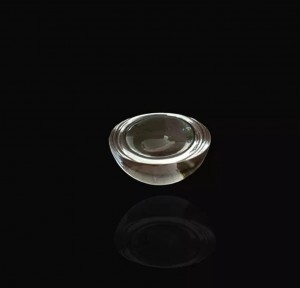
Optical Bk7 Glass Diameter 3mm Ball Lens for Fiber and Optical Coupler
Ball lenses are, as the name suggests, completely spherical lenses most commonly used to couple light in and out of fibers. We can supply ball lens in a range of alternative materials and diameters. -
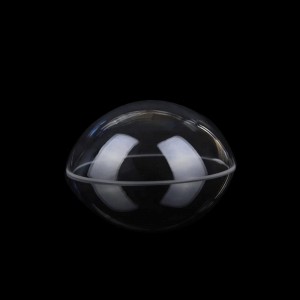
Saphhire Hemispherical Glass Dome Lens For Underwater/subsea Camera
Domes are ideal for underwater and split-level (half over/under) photography, because they correct for aberrations that occur as light travels at different speeds above and below water. Outex ports, including domes, are made of optical glass.
Optical Dome Applications
In the optical field, the application of an optical dome lens is mainly divided into two categories, one is military manufacturing and the other is ordinary optical systems.
Military manufacturing mainly refers to the infrared dome, mainly ZnSe and sapphire materials.
An optical system, mainly used for imaging and detection measurement system. It is mainly used for deep-sea imaging in imaging. The glass material can withstand sufficient water pressure and does not deform due to the acrylic material. Furthermore, the light transmittance of glass, the bubbles and stripes of the material itself, and the smoothness and hardness of the surface of the material itself make more deep-sea exploration keen to choose the glass material dome. Also used for atmospheric detection, pyranometer. The two almost parallel surfaces prevent the light from being significantly refracted when passing through the component, thereby ensuring that energy is not lost and improving the accuracy of the measurement.
Optical domes are hemispheric windows which provide a protective boundary while allowing a clear field of view between two environments. They are typically made of two parallel surfaces. DG Optics manufactures optical domes in a wide variety of substrates, suitable for visible, IR, or UV light. Our domes are available in sizes from 10 mm to over 350 mm diameter, with custom sizes possible on request.
BK7 or fused silica is a good choice for an optical dome that will be used in situations where only visible light must be transmitted; for instance, on camera sensor or for meteorology applications. BK7 has good chemical durability, and provides excellent transmission for the 300nmto 2µm wavelength range.
For UV- range light transmission, UV-grade fused silica is available. Our fused silica domes can withstand high pressure and are ideal for underwater application. This optical glass provides over 85 percent transmission for wavelengths up to 185 nm. -
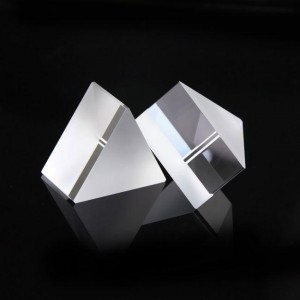
Optical prisms
Optical Prisms are used to redirect light at a designated angle. Optical Prisms are ideal for ray deviation, or for adjusting the orientation of an image. An Optical Prism's design determines how light interacts with it. When light enters an Optical Prism, it either reflects off an individual surface or several surfaces before exiting, or is refracted as it travels through the substrate. -
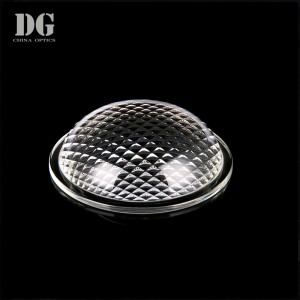
90 Degree Glass Lens for LED High Bay Lighting
We manufacture various shapes and sizes of glass lenses for various LED applications, either own design or customized. Application fields are dedicated to lighting (railway, architecture, industrial, aviation, stage lighting), optoelectronics, sensoring and detection systems, maritime lighting and others. -
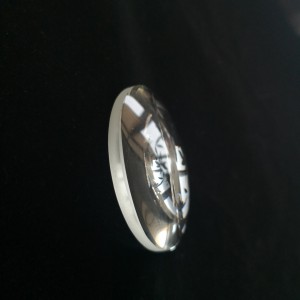
Bk7 Plano-Convex Glass Lens with Coating
DG Optics offers various sizes of plano-convex lens, and the lenses are available in a range of coating or substrate options. Anti-reflection coatings range from the Ultraviolet (UV) to the Infrared (IR), including UV-AR, UV-VIS, MgF2, VIS 0°, VIS-NIR, NIR I, NIR II,. Additional coatings designed specifically for laser wavelengths, such as 355nm, 532nm, or 1064nm are also offered. Germanium (Ge), Silicon (Si), or Zinc Selenide (ZnSe) substrates are ideal for Infrared (IR) applications. -
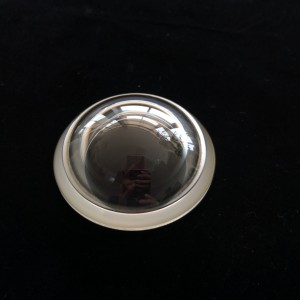
50mm Precision Polished Aspheric Lenses
Small aspheric glass lenses can be made by molding, which allows cheap mass production. Due to their low cost and good performance, molded aspheres are commonly used in inexpensive consumer cameras, camera phones, and CD players.They are also commonly used for laser diode collimation, and for coupling light into and out of optical fibers. -
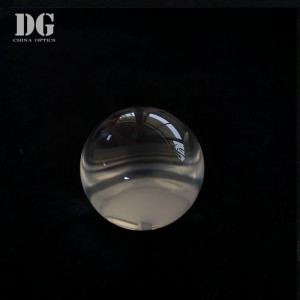
Ball and half ball lenses
Ball Lenses are commonly used to improve signal quality in fiber coupling applications, or for use in endoscopy or bar code scanning applications. Ball Lenses feature short back focal lengths to minimize the distance needed from the Ball Lens to the optical fiber. DG Optics offers a variety of Ball Lenses in a range of substrates for performance in the ultraviolet to the NIR. Half-Ball Lenses are also available to ease mounting or system integration. -
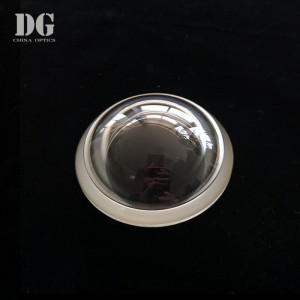
Optical Sphere Dome Lens
Dome windows are hemispheres. The two optical surfaces are an equal thickness apart, creating a naturally strong shape that gets tougher under pressure. This makes dome windows ideal for underwater environments and in applications such as camera dome ports and submersible windows.












